Artificial Turf Melting: Why It Happens and How to Fix It
| Fact Checked By: Lamont Robbins
Published: December 17, 2019 | Updated: June 2, 2023
It’s any homeowner’s nightmare: Your artificial turf mysteriously starts melting in random spots, and you can only watch helplessly as it starts discoloring and curling at the ends. What is happening to make your artificial grass melt, and what can you do about it? Is it defective?
Believe it or not, the culprit is the sun, with a little bit of help from your windows. Turf can actually melt from window glare. The intense heat from an energy-efficient glass window reflection has the ability to melt and damage plastics like those found in turf.
Artificial grass is a big investment, so of course, you want to prevent this damage. I’m here to help! I’ll walk you through the reasons that fake grass can melt, what causes the damage, how to prevent it, and what you can do to fix melted grass.
| Related Content >> Artificial Grass Buying Guide |
Does Artificial Turf Melt?
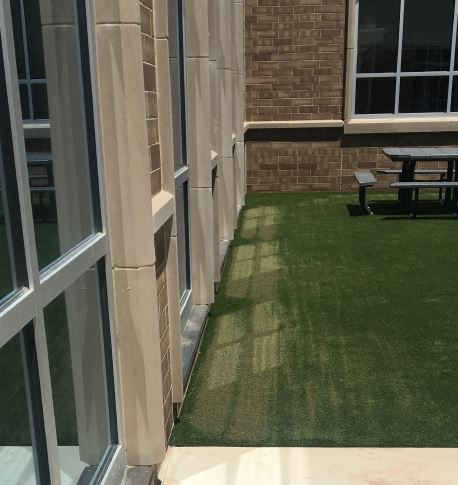
Let’s answer the big question first. Yes, turf can melt in extreme conditions. That doesn’t mean it’s flimsy or cheap.
Manufacturers have made huge strides in improving turf quality. Many new products are now made of polyethylene or polypropylene, which are plastic-based. Today’s turf has a durable backing, it’s designed to resist fading from UV radiation, and it is built to withstand the freeze and thaw of the seasons. Despite these innovations, turf is still partially made of plastic, and plastic melts in the heat.
According to Jill Odom of Total Landscape Care, “Most synthetic turfs have a melting point of around 175-200 degrees Fahrenheit.” Obviously, the sun can’t reach those temperatures on its own, but when that radiation reflects off a certain type of window, it’s easy to reach a heat level that can melt plastic.
| Related Content >> Artificial Grass FAQ: 15+ Things You Need to Know |
Why is My Artificial Turf Melting?
Glass window reflections have the potential to amplify the sun’s radiation and create hot spots on your synthetic grass. These superheated areas can damage turf and even melt it, and it can happen quickly. You could buy a brand new turf and find melt spots even a week later. This reflective damage phenomena only really happens if you have a certain kind of window in your home called a Low-E window.
What is a Low-E Window?
Since creation in the mid 1980’s the popularity of Low-emissivity glass (Low E) has been steadily increasing. This product was created to reflect ultraviolet and infrared light but allow visible light to pass straight through. In short, it reflects heat like mirrors but transmits light just like glass.
While benefiting the homeowner by decreasing the amount of heat passed through the glass, the heat reflected back can be extreme. The surface temperatures in these areas are many times high enough to damage plant materials or melt artificial grass.
Artificial turf fibers made of polyethylene will start to “pull down” (change shape and texture) around 175 degrees F. Reflected heat from Low-E glass windows can easily exceed these temperatures. – Brad Neubauer, Synthetic Grass Warehouse
While energy-efficient windows are the most common culprit, they aren’t the only menaces behind the phenomena of fake grass melting. Shiny and mirrored surfaces from decor, lawn equipment, and even toys can also reflect enough heat to damage grass. It doesn’t happen as often, but if you’re sure the problem is definitely not your windows, this is the next place to look.
So now you know. Your artificial grass is melting from window reflections and other reflective surfaces.
The next question is, what can you do about it?
How to Find Sources of Reflective Damage
Once you know how reflective damage to turf occurs, there are steps you can take to reduce and even eliminate the risk of melting. The first step is to get to know the area around your home.
If you’re trying to find the source of the damage, or even if you’re planning to install turf in the future and want to be prepared, start by surveying the outside of your home. Are there windows that reflect sunlight onto your turf? Are there any other reflective objects, like mirrors or shiny decor, that could also potentially reflect heat in the area?
After you identify spots where secondary glare is reflected, it’s time to take some measurements. Lay a thermometer on the ground where the reflections are directed and record the temperature. Repeat this step at various points in the day, especially at the hottest time of the day. If you find the temperature exceeding 150 degrees Fahrenheit at any point, it’s a good idea to take precautionary measures.
You can also use a sample or test strip of turf to determine if reflective damage is possible. Lay out the test piece in the area of concern and check back on it after a week or so. Examine the sample. Does it show signs of damage or melting?
If so, it’s time to learn how to protect your turf.
| Related Content >> How to Choose Artificial Turf Infill |
How to Stop Window Reflections
After you know where the reflective damage is coming from, it’s actually pretty simple to reduce the glare. There’s no need to panic and buy replacement windows. You have two main options: You can reduce the source of the glare, or you can remove turf from areas that receive excessive glare.
Using Anti-Glare Window Film
Perhaps the most common solution is to invest in window film for artificial grass. Film is effective and unobtrusive and it reduces the amount of glare bounced back onto the lawn. People can also choose to install screens or awnings outside of their homes to physically block sunlight from reaching the reflective surface. A big plus for window treatments is that they increase energy efficiency even more for your home.
Removing Turf From Glare Spots
If the idea of putting up screens over all your windows doesn’t appeal to you, you can simply move turf out of high-risk areas. There are plenty of ways to make this look natural. You can redesign problem spots to cover them with pavers or install gravel.
Even decorative features like large rocks can be a good option. For a really drastic change, consider planting a tree that will block the glare.
If you need some help deciding on a way to mitigate the glare, consider this advice:
“Awning windows and window films are straightforward options that mitigate window reflections. Installing tall trees can protect turf from sun reflection damage, but this is the most time-consuming option, as [you] will still have to wait for them to grow to a significant size.” – Jill Odom, Total Landscape Care
| Related Content >> Best Artificial Grass Options |
How to Fix Melted Artificial Grass
Fortunately, it’s relatively easy to repair sections of damaged turf. Unless the melting is extensive, there isn’t any need to replace the whole turf roll. Instead, you can cut away the damaged area and patch it up to look just like new.
You will need:
Utility knife, Shop-vac, Replacement turf, Seaming tape
Here are the steps you should take to repair melted grass:
- Vacuum up the infill: This will reveal the backing layer, so you can cut around the damaged area with more precision.
- Cut the turf: Use a sharp utility knife to cut through the backing. Be sure not to cut the turf fibers themselves during this process.
- Determine the direction of backing rows: Turf backing is structured in woven rows. Make sure the backing of your replacement piece is oriented with the rest of the turf. Also, ensure the fibers are facing the same direction as the rest of the lawn.
- Cut a replacement patch: Use the removed section as a template to cut a replacement piece of the same size.
- Insert seaming tape: Place adhesive-backed seaming tape under the opening in the turf, making sure the whole opening is covered with tape, adhesive side up. The tape on its own should stick to the underside of the turf, but you have the option to fasten it down with small nails for extra security.
- Place the turf patch: Align the patch over the opening and firmly press it into the tape to ensure it’s completely secured.
- Make the final touches: Trim the new fibers to even the surface if necessary. Add infill to the area and evenly distribute it across the surface.
| Related Content >> Best Outdoor Flooring Options |
Conclusion
At last, the mystery of the melting turf is solved. While you can’t stop the sun from shining (and who would want to?), you can take steps to reduce glare from Low-E windows. A simple film or window screen can do the trick, but you can go as far as rearranging your landscape to prevent damage to your artificial grass.
Plus, even if the damage is already done, you now know how to fix it without replacing your whole yard. Who said it wasn’t easy being green?
Ready to Shop?
ORDER FREE SAMPLES SHOP ALL ARTIFICIAL TURF
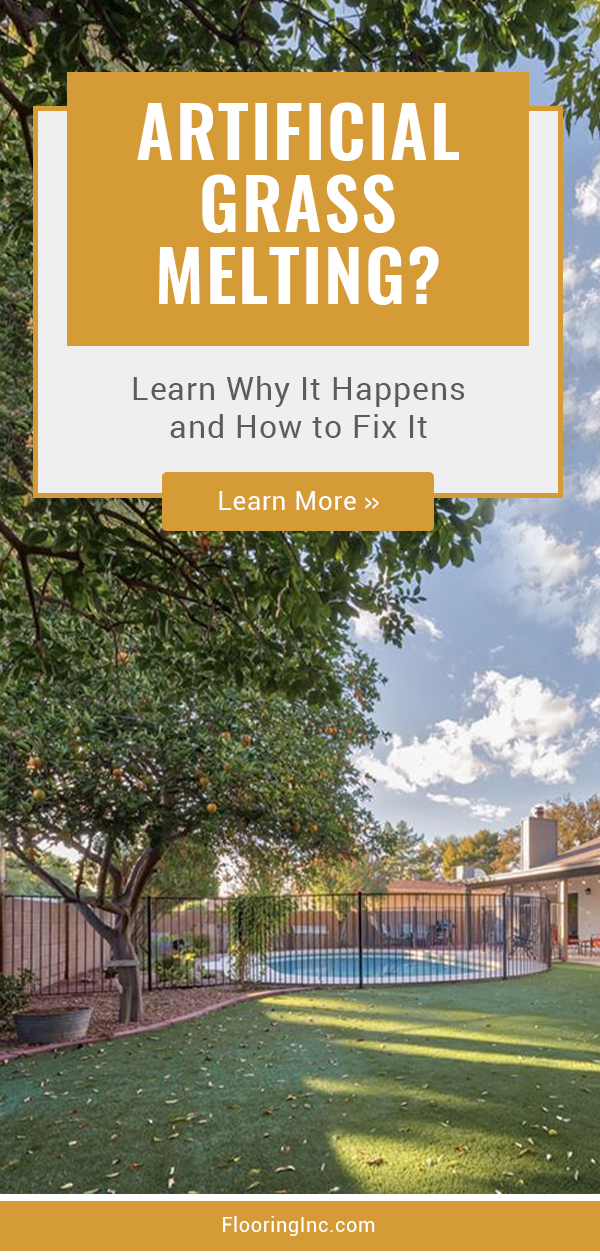

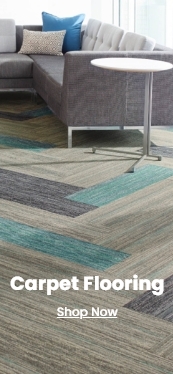
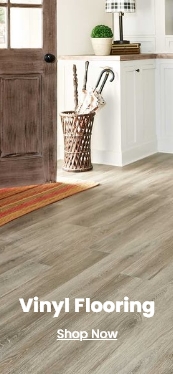



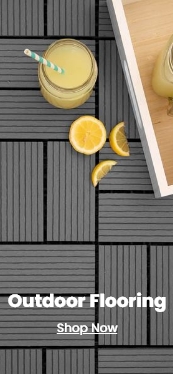
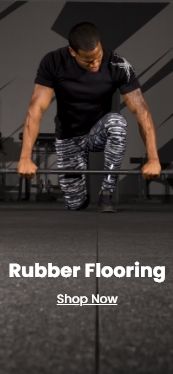
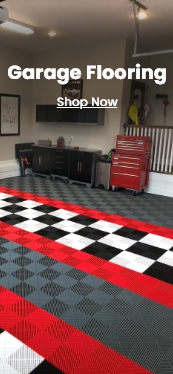
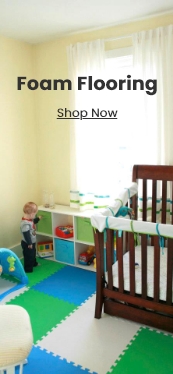

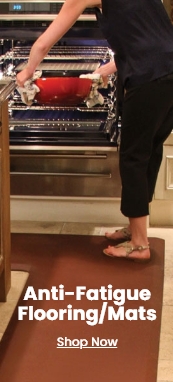

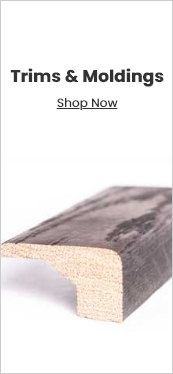
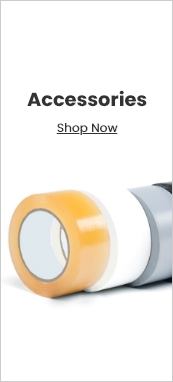

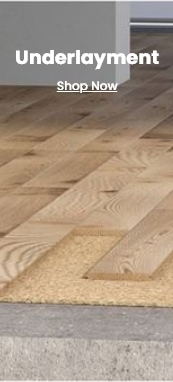

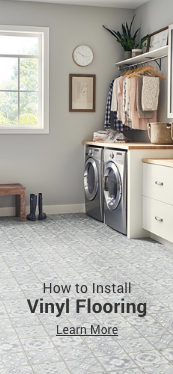
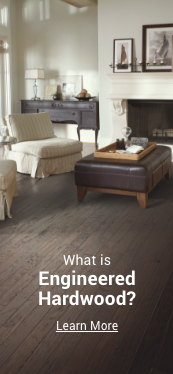
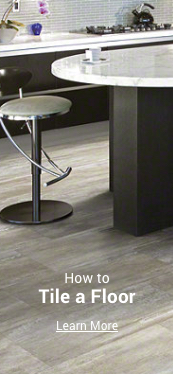
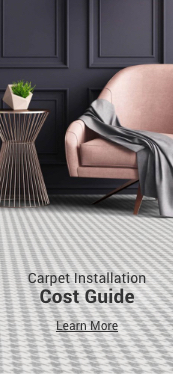
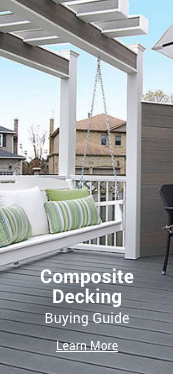
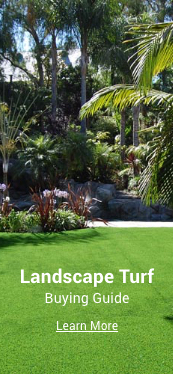
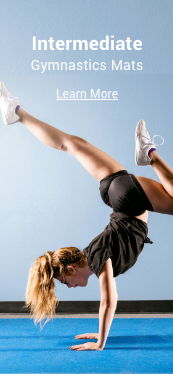
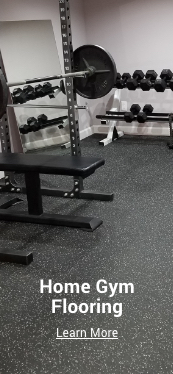
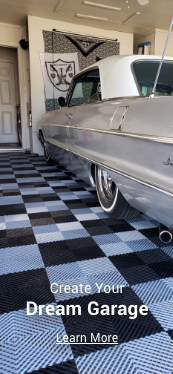
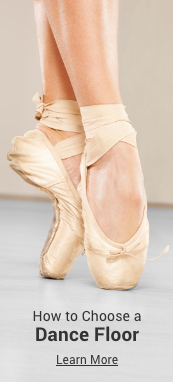
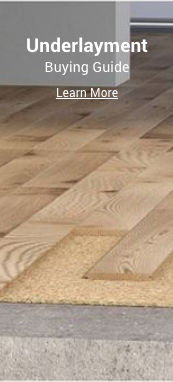

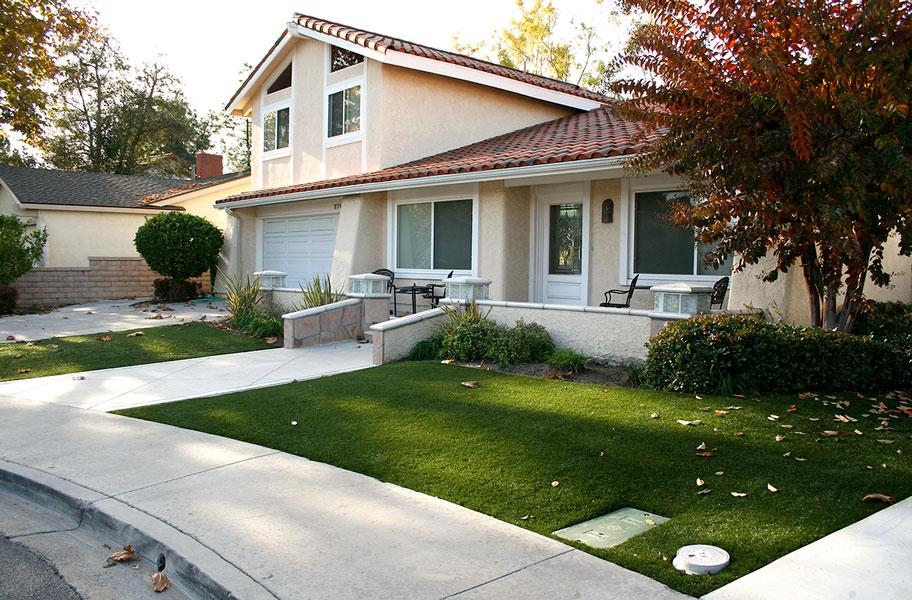
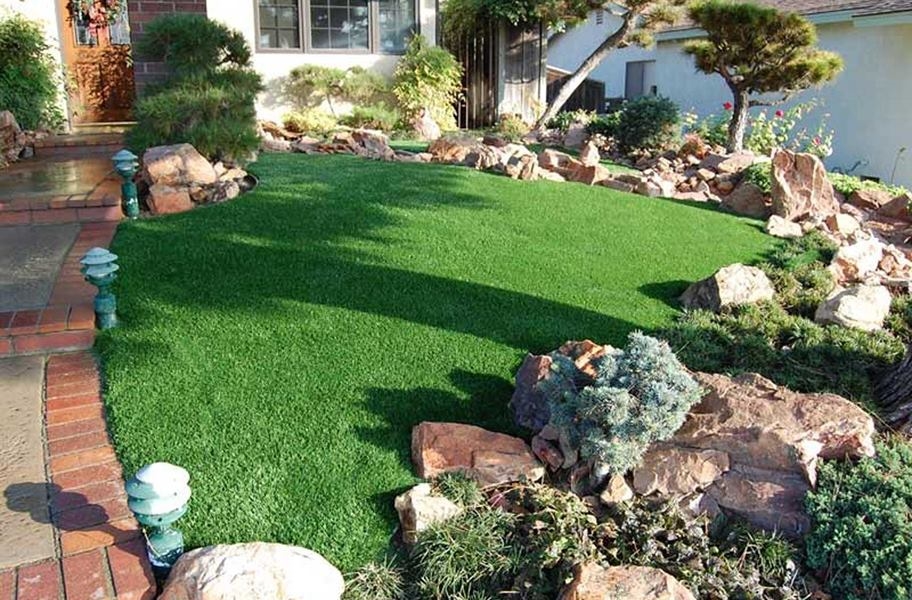
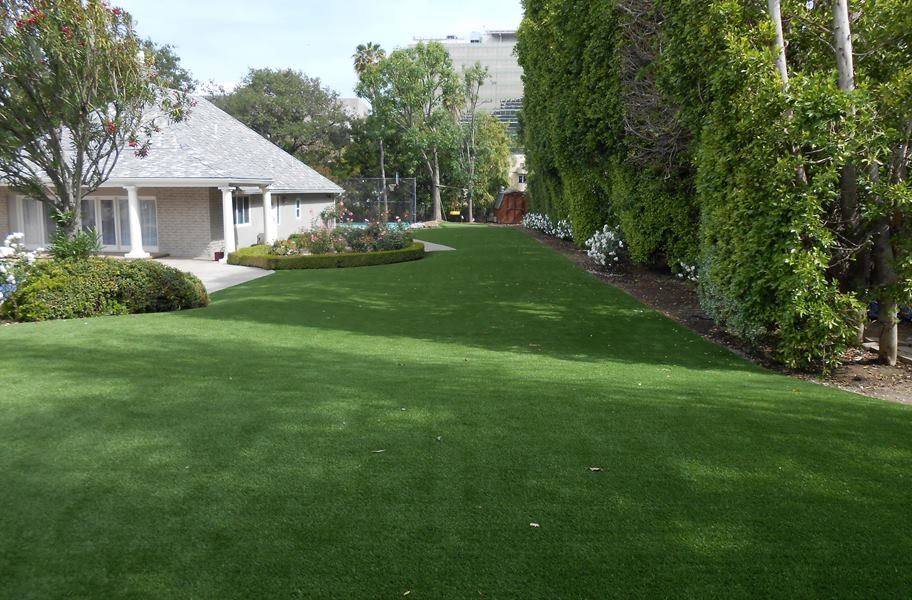
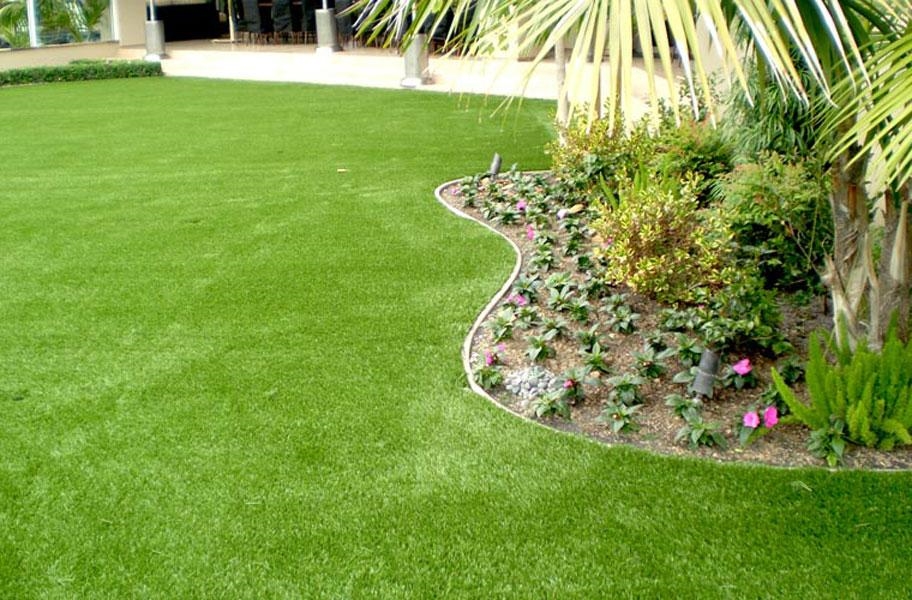
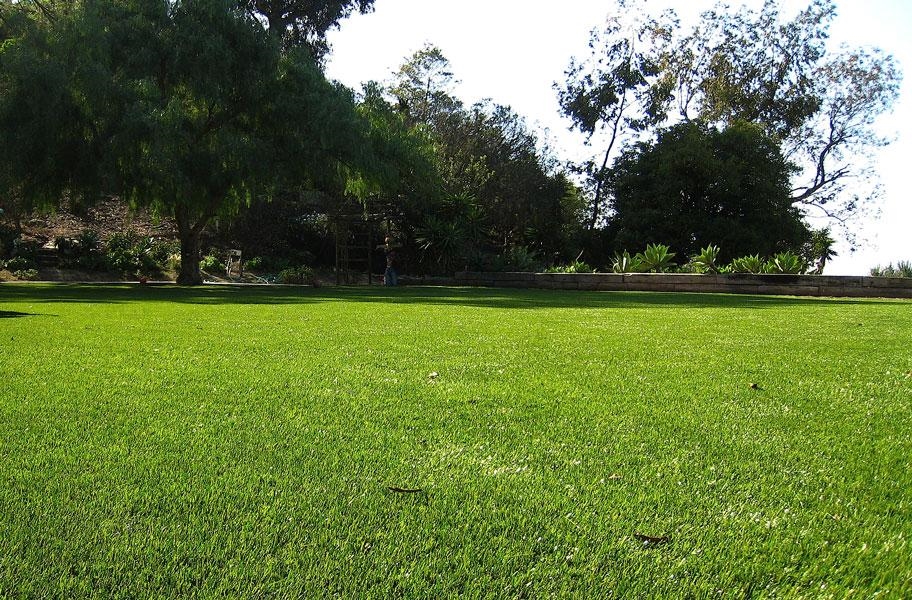
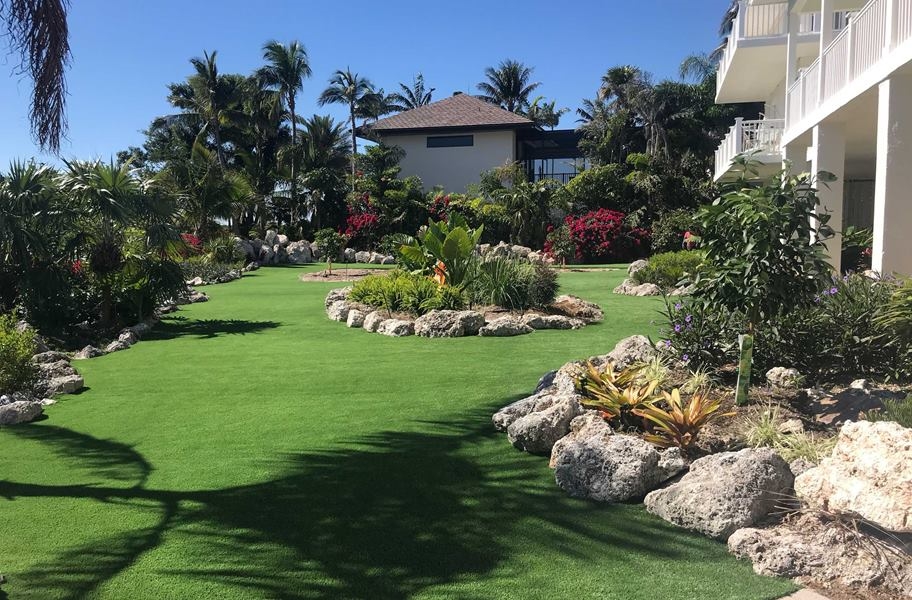


Shopping around it looks like any window protective films that are specifically protections for turf are crazy expensive. I see a lot of cheaper UV window film protectors that say they protect your furniture from the sun. Are those the same thing? Or is that type of thing actually bouncing more sun rays off your window and making the reflection worse? I searched anti-glare window film and they all say they are to protect the inside of your home and prevent glare inside. Any direction on specific window film that doesn’t cost an arm and a leg (and are clear) would be greatly appreciated!
Hi Joni,
Thanks for reaching out.
The window film that specifically protects turf helps reduce the amount of heat coming off the window. While this type of window film can be expensive, it’s often less expensive than replacing your artificial turf.
Oftentimes, it’s only a few of your windows that are causing issues. Therefore, to see which windows are causing your grass to melt, we recommend placing a piece of scrap cardboard where the turf would go, and watch throughout the day to see if a light beam occurs. Then target those windows, and use protective window films to cut costs along the way.
I hope this information helps. Please let us know if you have any other questions!
Thank you so much!